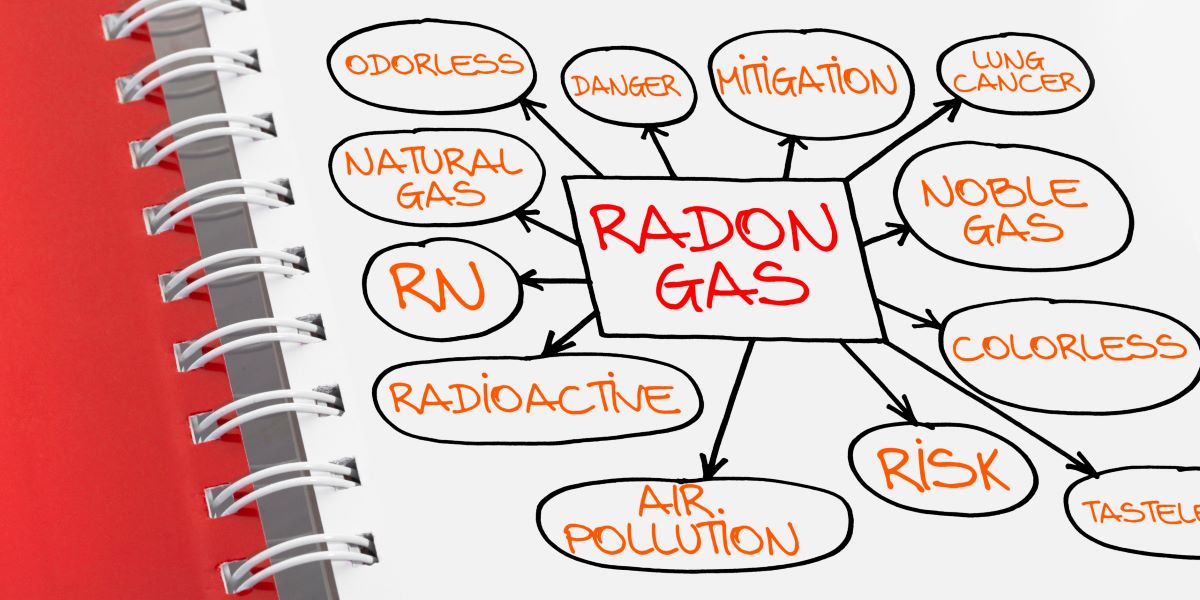
What are acceptable radon levels? This question often puzzles homeowners and property buyers alike. Radon, a naturally occurring radioactive gas, can pose significant health risks if concentrations in your home are too high. Yet, not everyone knows what levels are considered safe or how to mitigate this invisible threat. In this blog post, we'll unveil 15 essential facts about acceptable radon levels, shedding light on what they mean for you and your loved ones. From understanding the basics of radon measurement to exploring the steps for reducing radon in your living spaces, we're here to guide you through making your home a safer place. Whether you're testing for the first time or looking to ensure ongoing safety, these insights will equip you with the knowledge needed to tackle radon head-on.
What is Radon?
Radon is a colorless, odorless gas that occurs naturally from the decay of uranium in soil, rock, and water. It can seep into homes and buildings, posing health risks. Understanding acceptable radon levels is crucial for safety.
-
The Environmental Protection Agency (EPA) recommends taking action if radon levels exceed 4 picocuries per liter (pCi/L) in indoor air.
-
Radon is the second leading cause of lung cancer in the United States, following smoking.
How Radon Enters Homes
Radon can infiltrate homes through various entry points. Knowing how it gets in can help in mitigating its presence.
-
Cracks in floors and walls are common entry points for radon gas.
-
Construction joints and gaps around service pipes also allow radon to enter.
Testing for Radon
Testing is the only way to know if radon is present in your home. Here are some key facts about radon testing.
-
Short-term radon tests take between 2 to 90 days to complete.
-
Long-term tests, which last more than 90 days, provide a more accurate year-round average.
Health Risks of Radon
Understanding the health implications of radon exposure can emphasize the importance of testing and mitigation.
-
Prolonged exposure to high radon levels increases the risk of lung cancer.
-
Smokers exposed to radon have a significantly higher risk of lung cancer compared to non-smokers.
Mitigating Radon Levels
If testing reveals high radon levels, mitigation steps can reduce the risk. Here’s how you can lower radon levels in your home.
-
Installing a radon mitigation system can reduce radon levels by up to 99%.
-
Sealing cracks and openings in the foundation can help prevent radon entry.
Radon in Water
Radon can also be present in water, especially from private wells. Here’s what you need to know about radon in water.
-
Radon in water can contribute to indoor air radon levels when water is used for showering or cooking.
-
The EPA recommends treating water if radon levels exceed 4,000 pCi/L.
Radon Levels Worldwide
Radon levels vary globally due to differences in geology and building practices. Here are some interesting facts about radon levels around the world.
-
Some areas in Europe, such as the Czech Republic and Finland, have higher average radon levels compared to the U.S.
-
Radon levels in homes can vary significantly even within the same neighborhood.
Importance of Professional Help
While DIY radon testing kits are available, professional help ensures accuracy and effective mitigation.
- Certified radon professionals can provide more accurate testing and effective mitigation solutions.
Piecing Together What We've Learned
Radon, a silent but potentially deadly gas, lurks in many homes, undetected without proper testing. Understanding acceptable radon levels is crucial for maintaining a safe living environment. Health authorities agree that levels below 4 pCi/L are considered safe, yet lower is always better. Homeowners should regularly test their homes, especially basements and ground floors where radon levels are typically higher. If tests reveal levels above the recommended safe threshold, mitigation efforts, ranging from simple fixes to more complex systems, can significantly reduce radon concentrations. Awareness and proactive measures are key in protecting families from the health risks associated with long-term radon exposure. Remember, knowledge and action can make all the difference in ensuring your home is a safe haven from radon.
Was this page helpful?
Our commitment to delivering trustworthy and engaging content is at the heart of what we do. Each fact on our site is contributed by real users like you, bringing a wealth of diverse insights and information. To ensure the highest standards of accuracy and reliability, our dedicated editors meticulously review each submission. This process guarantees that the facts we share are not only fascinating but also credible. Trust in our commitment to quality and authenticity as you explore and learn with us.


